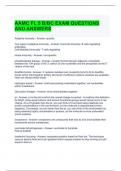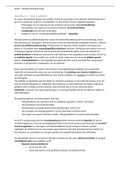Samenvatting
Summary Alle theorieën advanced criminology
- Instelling
- Universiteit Utrecht (UU)
Alle theorieën genoemd in het boek 'essential criminology' hoofdstuk 3, 4, 6, 7, 8, 9, 10 en 12 uitgewerkt. Theorist genoemd inclusief een uitleg van de theorieën
[Meer zien]














